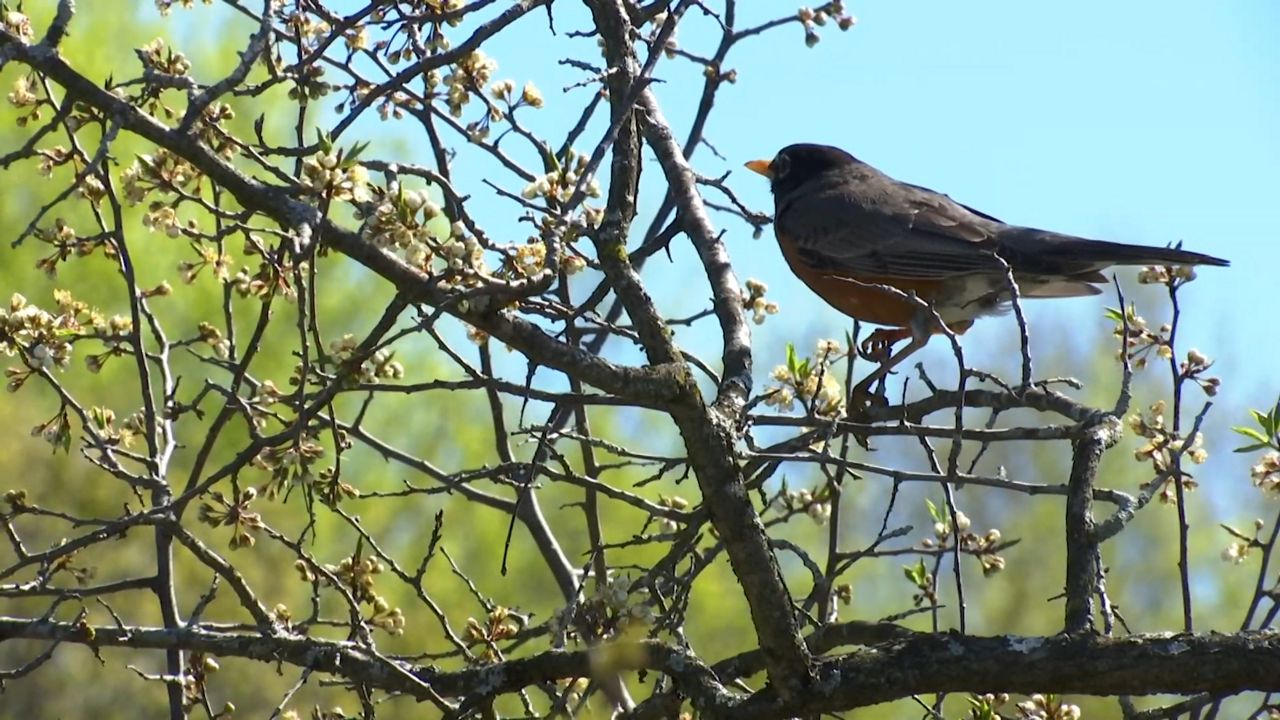NORTH CAROLINA — A mysterious ailment that sickened and killed songbirds in several mid-Atlantic states may have moved into North Carolina, according to the N.C. Wildlife Resources Commission.
The illness, which is expanding its reach, appears to cause the eyes of birds to crust over.
What You Need To Know
- An illness killing songbirds in mid-Atlantic states may now be in North Carolina
- The main visible symptoms are swollen eyes or crusty discharge around the eyes
- Wildlife officials are urging people to remove backyard bird feeders and avoid handling sick birds
- No human health issues have been reported in connection to the bird disease
Wildlife managers and veterinarians first received reports in late April and May of sick birds in Maryland, Virginia, West Virginia, Kentucky and Washington, D.C. Later reports came from Pennsylvania, Delaware, New Jersey, Ohio and Indiana.
“More recently additional states have been included, and our agency has begun receiving reports of sick and dying birds, which may be due to the new disease,” the N.C. wildlife officials reported in a Facebook post Tuesday.
The outbreak may have peaked in June and be declining in some early hotspots, but it's ongoing in other regions, according to Brian Evans, a bird ecologist at the Smithsonian National Zoo & Conservation Biology Institute.
While scientists are still racing to confirm the cause, it seems juvenile birds may be most susceptible.
The U.S. Geological Survey, which oversees responses to some natural hazards and risks, has recommended that people temporarily take down bird feeders and clean out bird baths to reduce places that birds could closely congregate and potentially spread disease.
WHICH BIRDS ARE AFFECTED?
So far, the majority of birds reported as ailing have been fledgling blue jays, American robins, European starlings and common grackles, but other songbirds are also affected.
The main visible symptoms are swollen eyes or crusty discharge around the eyes, as well as off-balance movements that may indicate neurological damage.
WHAT'S CAUSING THE SICKNESS?
Scientists at the USGS, the Smithsonian and universities are still working to determine the causes. Through testing of sick and deceased birds, they have determined that this outbreak was not primarily caused by salmonella, chlamydia, avian influenza virus, West Nile virus or a few other viruses that commonly afflict birds.
WHAT CAN I DO TO HELP?
USGS is recommending that people remove backyard bird feeders, avoid handling sick birds and keep pets away from birds. The agency also recommends that people with bird baths disinfect them with a solution of 10% bleach and 90% water.
“Because we don’t know what it is, we have to be that much more vigilant. We still don’t know if it’s caused by a virus or a bacteria" or a toxic chemical in pesticides, said Jordan Rutter, director of public relations at the American Bird Conservancy, a nonprofit group.
However, removing bird feeders doesn’t have to mean ignoring the needs of birds. Rutter suggested that people with yards could incorporate native plants that provide food, such as berries and nectar, while also attracting insects birds eat.
HOW UNUSUAL IS THIS OUTBREAK?
Birds are susceptible to several viruses and bacteria. When a contagious pathogen begins to spread among birds in an area, wildlife managers typically recommend that residents remove outdoor feeders. This spring an outbreak of salmonella among wild songbirds in several states caused the Centers for Disease Control and Prevention to issue such a warning.
What’s different in this instance is that scientists do not know the cause of the ailment.
No human health or domestic livestock and poultry issues have been reported.
North Carolina officials ask anyone who finds a dead bird to email hwi@ncwildlife.org with a photo of the bird(s), including the location and date found. Click here to report sick birds to a licensed rehabilitator.








